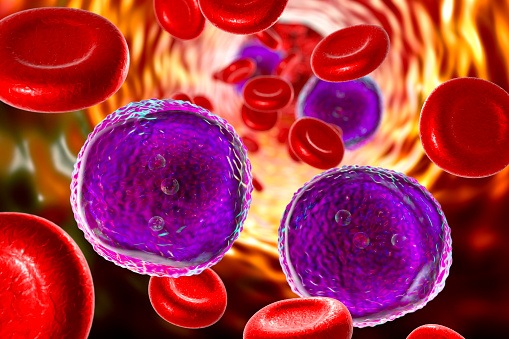Many young people are now coming down with the cancer of the blood called Leukemia, and we have lost a lot of them because of lack of awareness as well as lack of health centres that can treat the cancer. Please share useful information with us.
ZeeZeet V.
Thanks for your question ZeeZeet and for your concern. According to the World Health Organsiation (WHO), Leukemia is a type of cancer that results in the body making too many abnormal white blood cells.
This uncontrolled production results in an excessive amount of white blood cells that may be immature (acute leukemia) or mature (chronic leukemia). The leukemic cells may not function well to fight infection and may interfere with the production of red blood cells (which carry oxygen) and platelets (which control bleeding).
Examples of causes
Many at times the cause is not known though there are known specific risk factors.
1. Previous chemotherapy or radiation therapy.
2. Exposure to high doses of radiation.
3. Family history
4. Genetic abnormality.
5. Genetic disorders, such as Down syndrome
There are four types of leukemia
1. Acute lymphocytic leukemia (ALL) is the most common form of leukemia in children. It is the result of an uncontrolled production of a type of white blood cell called lymphocytes. This causes a buildup of the immature forms of lymphocytes. The high numbers also interfere with the production of red blood cells and platelets.
2. Chronic lymphocytic leukemia (CLL) most often occurs in people over 55 years of age. It is the most common type of leukemia overall, and occurs about twice as often in men as in women.
3. Acute myeloid leukemia (AML) causes uncontrolled production of another type of white blood cell called myelocytes. This causes an overgrowth of their immature cells called myeloblasts. This interferes with the levels of functioning red blood cells, platelets, and normal white blood cells. AML is the most common form of acute leukemia in adults.
4. Chronic myelogenous leukemia (CML) occurs more slowly than AML and has less effect on the development of other cell types. Chances of getting CML are very low for children but increase with age.
Symptoms and complications
1. In acute leukemia, the extra white blood cells are mostly immature, whereas in chronic leukemia, the white blood cells are mature but still function poorly. In either case, fewer platelets (the type of blood cells that help stop bleeding) are produced, causing excessive bleeding. Minor injuries can result in hard-to-stop bleeding and large bruises.
2. Because the immune system isn’t working normally, infections are more frequent. Lymph glands and the spleen may become enlarged, causing pain in the left side of the abdomen.
3. If abnormal cells accumulate in the brain and spinal cord (as in AML), the symptoms include vomiting and headaches. A lack of red blood cells causes fatigue and shortness of breath.
How to diagnose?
Blood and bone marrow are taken to check the types and numbers of blood cells present. High levels of immature white blood cells (and low red blood cell and platelet counts) indicate acute leukemia. Cytogenetic analysis and flow cytometry can help identify the abnormal cells.
Treatment and prevention
1. Chronic lymphocytic leukemia can result in an elevated white blood cell count that can remain stable for years and not require treatment. Often, though, mild treatments are required to keep the total count within a manageable range.
2. Chronic myelogenous leukemia can be treated with a medication called tyrosine kinase inhibitors.
3. For acute leukemias, a combination of different chemotherapy medications is used.
4. People with acute leukemias may need to take antibiotics to fight infections. Side effects of chemotherapy include nausea, vomiting, and hair loss.
5. Bone marrow transplant is the only cure for chronic myelogenous leukemia, but it is rarely used today because of success with the ability of tyrosine kinase inhibitors to act on the Philadelphia chromosome to induce a remission.
Bone marrow transplant is more commonly used for acute myeloid leukemia and acute lymphocytic leukemia when chemotherapy alone has a low chance of resulting in a cure.

 Join Daily Trust WhatsApp Community For Quick Access To News and Happenings Around You.
Join Daily Trust WhatsApp Community For Quick Access To News and Happenings Around You.